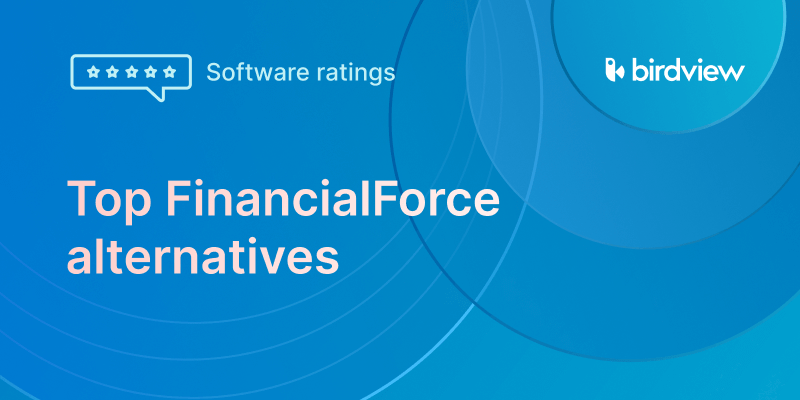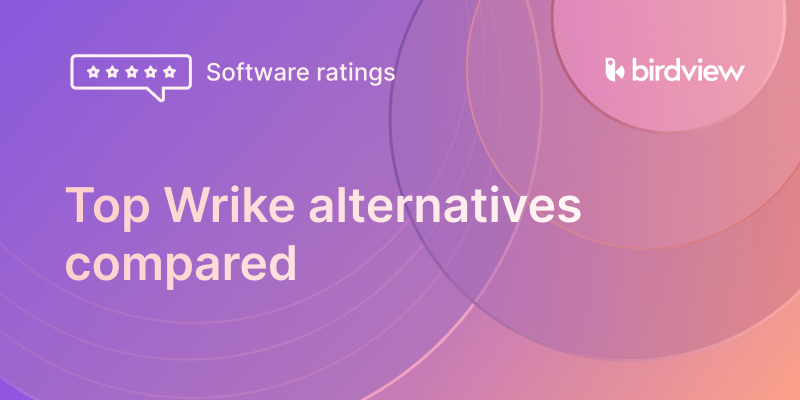Managing projects is challenging. But managing many projects across a company? That‘s a different game entirely. If you‘ve ever wondered why some teams talk about project management, while others focus on project portfolio management, you‘re not alone. These terms sound similar–but they serve very different purposes.
Learn the difference between project and portfolio management–and when to use each. You‘ll learn when to use project vs portfolio management–and how Birdview PSA helps you manage both without switching tools.
In this article
What is project management?
Project management is all about planning, executing, and delivering a single project. That project might be launching a new website, organizing an event, developing a mobile app, or onboarding a new client. Whatever the case, the goal is to deliver a clear outcome–on time and within budget.
Key focus areas in project management:
-
Defining goals and scope
-
Creating a project plan and timeline
-
Assigning tasks to team members
-
Managing day-to-day progress
-
Tracking time, budget, and deliverables
Example: Imagine you work for a marketing agency. Your client needs a product launch campaign. As a project manager, you build the plan: write copy, design ads, schedule posts, monitor feedback. Your job is to make sure this one campaign is successful.
Tip: Use a task management tool like Birdview PSA to track task assignments, deadlines, and team workload in real time. This helps you avoid last-minute surprises.
What is project portfolio management?
Project portfolio management (PPM) is about managing a group of projects together–not just one. The goal is to make sure the entire portfolio supports the organization‘s bigger strategy, makes the best use of resources, and delivers value.
PPM looks at the big picture: Which projects should we do? Which should we delay or cancel? Do we have the right people and budget for what‘s coming?
Key focus areas in project portfolio management:
-
Aligning projects with business goals
-
Prioritizing initiatives based on ROI, risk, or resource capacity
-
Monitoring resource usage across teams
-
Managing budgets across multiple projects
-
Evaluating performance at the portfolio level
Example: Let‘s say your agency is handling 15 client campaigns at once. Some are profitable, others behind schedule. Leaders need to know where to double down–and where to step back. Portfolio management helps you zoom out, evaluate trade-offs, and focus on what drives the most value.
Tip: Use dashboards and reports in Birdview PSA to monitor portfolio-level metrics like resource utilization, budget burn, and strategic alignment.
Key differences between project management and project portfolio management
| Feature | Project Management | Portfolio Management |
|---|---|---|
| Focus | Single project | Multiple projects |
| Goal | Deliver on time and budget | Maximize overall value |
| Scope | Task and team level | Strategic and business level |
| Metrics tracked | Budget, timeline, scope | ROI, risk, capacity, alignment |
| Used by | Project teams and managers | Executives, PMOs, portfolio leads |
| Decisions | How to deliver a project | Which projects to pursue |
Do you need both project and portfolio management?
Yes–and here‘s why.
Project management keeps each initiative moving forward day to day. That‘s where execution happens. But as soon as you‘re dealing with multiple projects, limited resources, and competing priorities, project portfolio management becomes essential.
Think of it like this:
-
Project management = managing one train
-
Portfolio management = running the whole rail network
One keeps the train on schedule. The other makes sure trains don‘t crash, resources aren‘t overbooked, and everything supports your destination.
How does a portfolio manager differ from a project manager?
While project managers and portfolio managers often work closely together, their roles serve different purposes.
A project manager is responsible for delivering a specific project successfully. They focus on the details–defining tasks, managing timelines, coordinating the team, tracking progress, and ensuring everything stays on budget and within scope. Their goal is to get the project done right and on time.
A portfolio manager, on the other hand, takes a step back to look at all the projects happening across the business. Their job is to make sure each project aligns with the company‘s goals, that resources are allocated wisely, and that the right initiatives are moving forward. They prioritize based on strategy, capacity, risk, and expected return–not just deadlines.
Think of it like this:
-
A project manager asks, “How do we deliver this project successfully?”
-
A portfolio manager asks, “Should we be doing this project at all–and how does it fit with everything else?”
Both roles are essential. One keeps the wheels turning. The other makes sure the car is headed in the right direction.
When to move from project to portfolio management
At some point, managing individual projects just isn‘t enough. If your organization is juggling more than 5–10 active projects, sharing teams across multiple initiatives, or constantly making tough choices about where to allocate limited time and budget, it may be time to adopt a portfolio-level approach.
Project portfolio management gives you the visibility to see what‘s working, what isn‘t, and where to focus next. It helps you avoid overloading key team members, prioritize the most valuable initiatives, and plan resources more effectively. If your leadership team can‘t easily answer which projects matter most–or which ones are dragging the business down–that‘s a clear sign it‘s time to shift from project execution to strategic oversight.
By managing the portfolio, not just individual projects, you gain more control–not less. You can spot misaligned efforts early, reallocate resources before issues arise, and plan with long-term value in mind. This balance between tactical delivery and strategic direction helps teams grow sustainably–without constant burnout or chaos.
Why portfolio management isn‘t just for enterprises
Project portfolio management isn‘t just for big enterprises with formal PMOs. Even small teams–like a 10-person agency or a growing IT consultancy–can benefit from a portfolio mindset. If your business is scaling, adding new services, or struggling to juggle multiple projects, a portfolio view helps you see where your team‘s time goes and what‘s worth prioritizing.
The good news? You don‘t have to overhaul everything at once. Start small: set up a basic intake process, track priorities in one place, and review your top projects regularly. These simple steps can lead to smarter decisions and healthier growth–even for lean teams.
How Birdview PSA connects project and portfolio management
Birdview PSA is a powerful Project Portfolio Management Software that combines day-to-day project execution with big-picture portfolio planning in one place. Project managers get the tools to plan timelines, assign tasks, track time and budget, and keep work on track. Meanwhile, leadership teams and PMOs can view the full project pipeline, prioritize initiatives, and monitor performance across the business.
For example, a consulting firm using Birdview can manage each client project individually while also tracking overall profitability, resource usage, and delivery risks at the portfolio level. This helps the team stay focused on day-to-day execution while aligning with long-term goals.
Project management helps you execute. Portfolio management helps you decide what‘s worth executing.
Birdview PSA supports both–so you don‘t have to choose.
Ready to see it in action?
or
Read more:
Project Portfolio Management: The Ultimate Guide
Top benefits of project portfolio management for service firms
Best Project Portfolio Management Software 2025
❓Frequently Asked Questions
1. Can I start using portfolio management without overhauling everything?
Yes. You don‘t have to change your entire workflow overnight. Many teams start small–with a simple intake form, a shared list of project priorities, and regular check-ins with leadership. Small changes today help you scale smarter tomorrow.
2. When should I switch from project to portfolio management?
If you‘re managing more than a few active projects, sharing resources across teams, or struggling to prioritize what matters most, it‘s time to think at the portfolio level. It helps align your work with strategy and ensures your resources are used effectively.
3. What are the risks of not using portfolio management?
Without a portfolio view, teams may take on too much work, duplicate efforts, or waste time on low-value initiatives. This can lead to missed deadlines, overworked staff, and projects that fail to support your business goals.
4. How does portfolio management reduce team burnout?
By giving you visibility into workloads across all projects, portfolio management helps prevent overbooking and supports better resource planning. You can pause low-priority tasks, spread work more evenly, and support your team‘s long-term capacity.
5. What does portfolio-level visibility actually mean?
It means seeing how all current and upcoming projects connect to your goals, budgets, and team availability. Instead of siloed task lists, you get a big-picture view that helps you make better decisions and avoid surprises.
6. Can Birdview PSA support both project and portfolio management?
Yes. Birdview PSA lets you manage project timelines, budgets, and tasks, while also tracking performance, utilization, and risk across your entire portfolio–all in one platform.
7. How does Birdview PSA help avoid resource conflicts and support better decisions?
Birdview offers real-time visibility into capacity, project health, and team workloads. This helps you resolve scheduling conflicts, avoid overcommitting staff, and make smarter, data-driven choices about where to invest time and resources.



